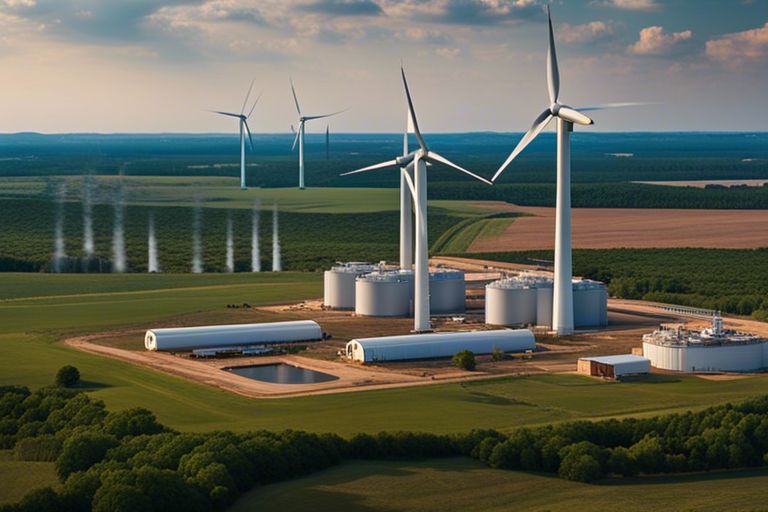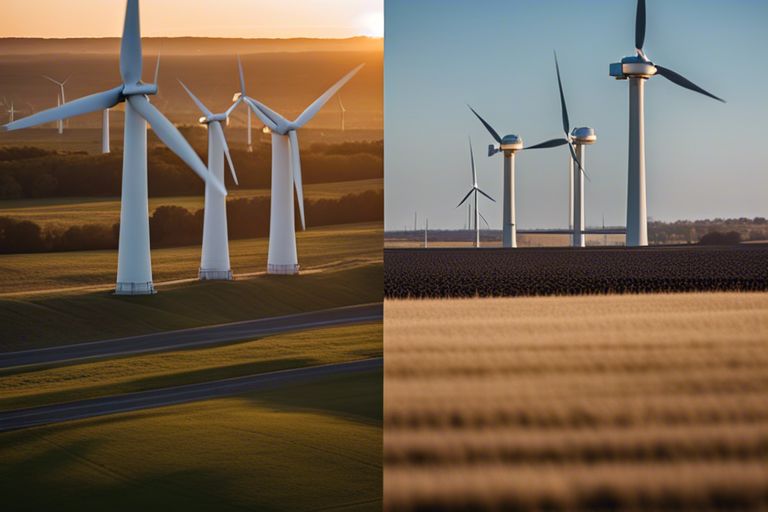Most notably, the landscape of electricity generation in Oklahoma is shifting as renewable energy sources are making their mark on the industry. The state, long dependent on coal for power, is seeing a gradual but significant decrease in coal-fired generation as wind and solar power take charge. This transition is not only altering the energy mix but also impacting the economy and environment of the state. Understanding the implications of this shift is crucial for policymakers, businesses, and residents alike as renewable energy continues to gain momentum and reshape the energy sector in Oklahoma.
Key Takeaways:
- Renewable Energy Growth: Renewable energy sources, such as wind power, have been rapidly expanding in Oklahoma, impacting the share of coal in electricity generation.
- Decline of Coal: The increasing affordability and efficiency of renewable energy technologies have led to a decrease in coal-fired power plants in the state.
- Environmental Impact: Transitioning to renewable energy sources has positive environmental implications by reducing carbon emissions and local air pollution associated with coal combustion.
- Jobs and Economy: The renewable energy sector is creating new job opportunities and contributing to economic growth in Oklahoma, diversifying the state’s energy portfolio.
- Policy and Future Outlook: State policies supporting renewable energy deployment, along with market forces, are expected to continue shaping the future of electricity generation in Oklahoma, further impacting the role of coal.
The Transition from Coal to Renewables
Historical Reliance on Coal
For years, Oklahoma has heavily relied on coal as a primary source of electricity generation. Coal-fired power plants have played a significant role in meeting the state’s energy needs. However, the environmental impact and sustainability concerns associated with coal have prompted a shift towards renewable energy sources.
Current Renewable Energy Contributions
Any analysis of Oklahoma’s electricity generation landscape would reveal a notable increase in the utilization of renewable energy sources. Wind power has emerged as a frontrunner in the state’s renewable energy portfolio, with Oklahoma ranking among the top states in the nation for wind energy capacity. This shift towards renewables is reshaping the energy sector and reducing the state’s dependence on coal.
The transition to renewables has been facilitated by various factors, including federal and state incentives, technological advancements, and growing consumer demand for sustainable energy options. Oklahoma’s abundant natural resources, particularly its vast wind energy potential, have positioned the state as a leader in renewable energy development.

Factors Driving the Energy Shift
Clearly, several factors are driving the energy shift from coal to renewable energy sources in Oklahoma. These factors include economic considerations, environmental policies and regulations, technological advancements, and changing consumer preferences.
Economic Considerations
Considerations of cost-effectiveness and financial viability play a crucial role in the shift towards renewable energy sources. Renewable energy sources such as solar and wind power have become increasingly competitive in terms of pricing, making them more attractive options for electricity generation.
Environmental Policies and Regulations
On the environmental front, policies and regulations aimed at reducing carbon emissions and mitigating climate change have put pressure on the energy sector to transition towards cleaner energy sources. The implementation of renewable portfolio standards and carbon pricing mechanisms have incentivized the integration of renewable energy into the electricity mix in Oklahoma.
Factors such as the decline in coal consumption due to environmental concerns and the increased focus on sustainability by both state authorities and consumers have also played a significant role in driving the energy shift towards renewable sources. Assume that this trend will continue to shape the future of electricity generation in Oklahoma.
Impact on the Coal Industry
Employment and Economic Effects
For the coal industry in Oklahoma, the rise of renewable energy sources has posed challenges in terms of employment and economic impact. As more emphasis is placed on cleaner energy alternatives, demand for coal has dwindled, leading to a decline in coal-related jobs and revenue. This shift has put pressure on coal companies to reassess their operations and consider alternative strategies to remain financially viable.
Adaptation and Diversification Strategies
An important aspect for coal companies in Oklahoma facing the impact of renewable energy sources is the need to develop adaptation and diversification strategies. One potential strategy is for these companies to explore diversifying their energy sources by integrating renewable energy into their portfolio. This could involve investing in solar or wind energy projects to supplement their traditional coal-based operations and stay competitive in the evolving energy landscape.
Effects: The increasing adoption of renewable energy sources in Oklahoma has led to a significant decrease in coal consumption and production, impacting the revenue and employment opportunities within the coal industry. This shift has prompted coal companies to consider new strategies, such as diversifying their energy sources, to navigate the changing energy market. While these changes may pose challenges, they also present opportunities for coal companies to adapt and thrive in a more sustainable energy future.

Challenges and Opportunities
Infrastructure and Investment Needs
Opportunities: Oklahoma faces the challenge of upgrading its infrastructures to support the integration of renewable energy sources into the grid. However, this presents an opportunity for significant investments in modernizing the state’s energy infrastructure. By focusing on developing smarter grids and energy storage technologies, Oklahoma can create a more efficient and resilient energy system that can better incorporate renewables.
The Future of Energy Mix in Oklahoma
Oklahoma: With the increasing presence of renewable energy sources in Oklahoma’s electricity generation mix, the future of energy in the state is evolving. Companies are beginning to shift their focus towards cleaner energy options, reducing their reliance on coal. This shift is driven by both economic and environmental factors, with renewable energy sources offering a more sustainable and cost-effective alternative to traditional coal-fired power plants.
Final Words
Drawing together, it is clear that renewable energy sources are having a significant impact on coal in Oklahoma’s electricity generation. The state’s increased focus on wind and solar power, driven by a combination of environmental concerns, favorable economic factors, and technological advancements, has led to a gradual decline in coal-fired power generation. While coal still plays a role in Oklahoma’s energy mix, the shift towards renewables is undeniable. As the renewable energy sector continues to grow and innovate, it is likely that coal will continue to face increasing challenges in the state’s electricity generation landscape. Overall, the transition to renewable energy sources bodes well for Oklahoma’s long-term environmental sustainability and economic growth.
FAQ
Q: What are renewable energy sources?
A: Renewable energy sources are sources of energy that are replenished naturally such as sunlight, wind, rain, tides, waves, and geothermal heat.
Q: How has renewable energy impacted coal in Oklahoma’s electricity generation?
A: Renewable energy sources have significantly impacted coal in Oklahoma’s electricity generation by reducing the reliance on coal-fired power plants and shifting towards cleaner and more sustainable energy sources.
Q: What are some common renewable energy sources used in Oklahoma?
A: Some common renewable energy sources used in Oklahoma include wind energy, solar power, hydroelectric power, and biomass energy.
Q: How does wind energy contribute to electricity generation in Oklahoma?
A: Wind energy is a major contributor to electricity generation in Oklahoma, with the state ranking among the top in the nation for wind power capacity and production.
Q: What are the environmental benefits of using renewable energy sources over coal?
A: Using renewable energy sources over coal helps reduce greenhouse gas emissions, air pollution, water usage, and dependence on finite fossil fuels, leading to a cleaner and more sustainable environment.
Q: Is Oklahoma investing in renewable energy infrastructure?
A: Yes, Oklahoma is actively investing in renewable energy infrastructure, particularly in wind energy, to diversify its energy portfolio and reduce the impact of coal in electricity generation.
Q: What challenges are associated with the transition from coal to renewable energy in Oklahoma?
A: Some challenges associated with the transition from coal to renewable energy in Oklahoma include grid integration, energy storage, intermittency of renewable sources, and the need for infrastructure upgrades.




